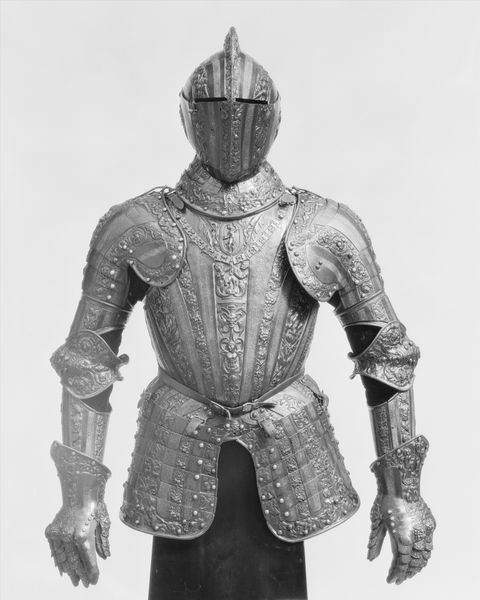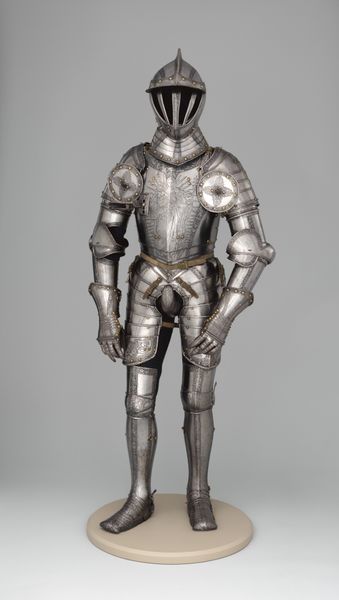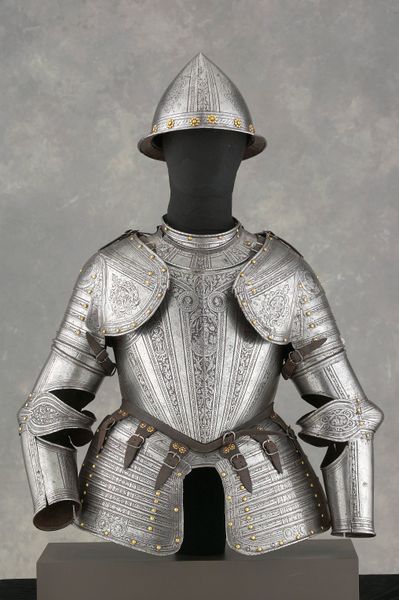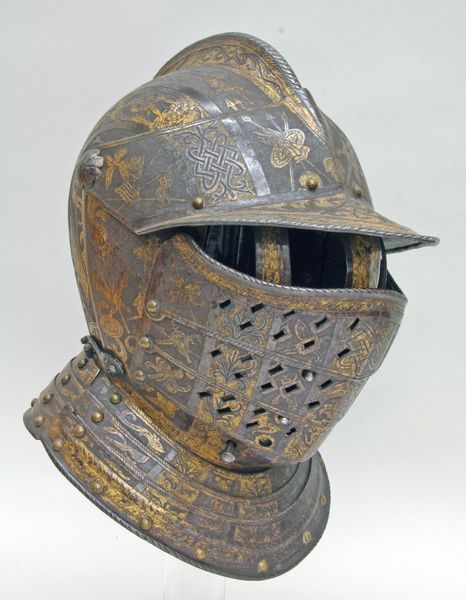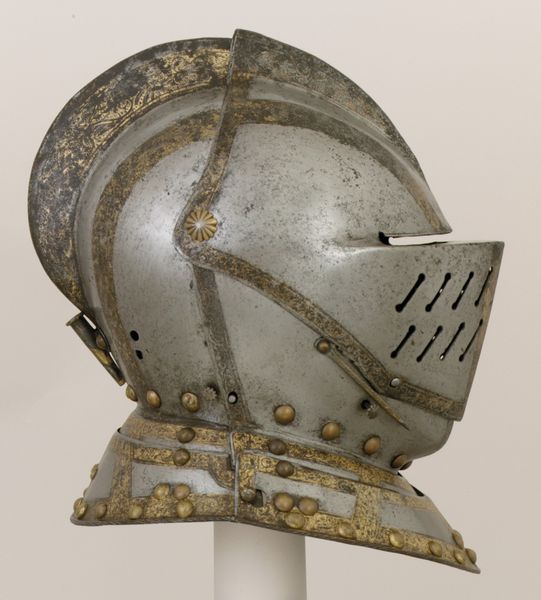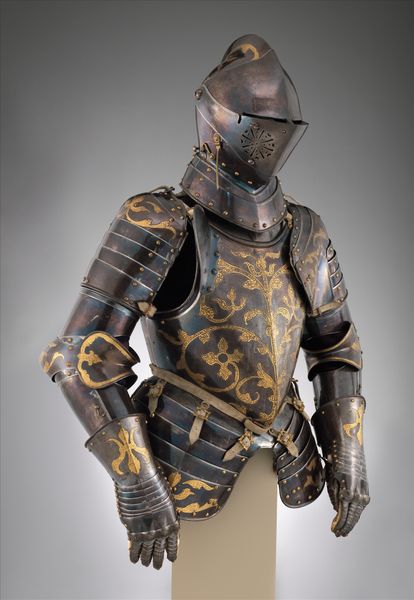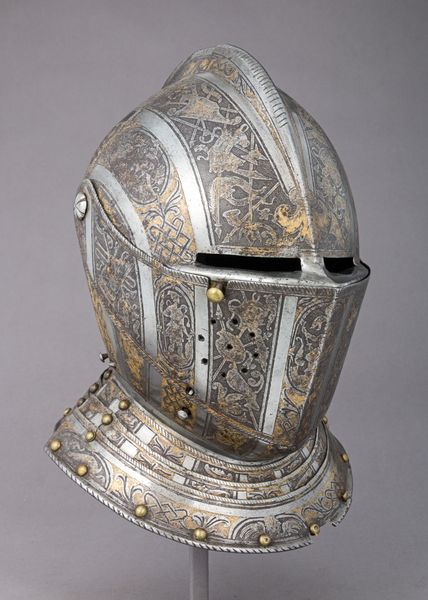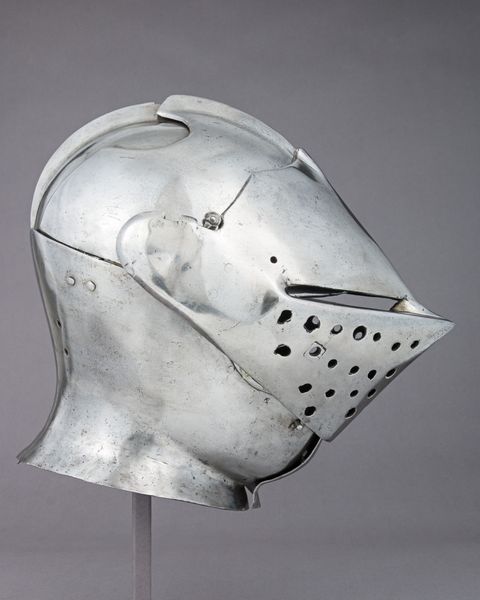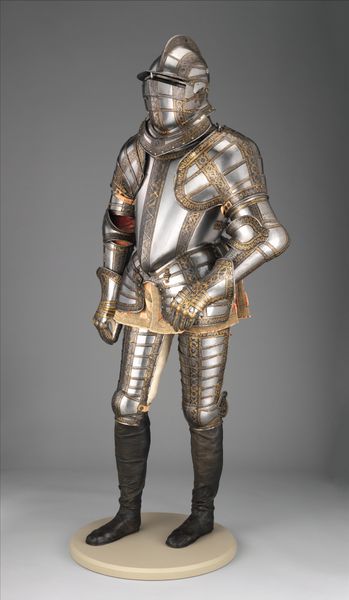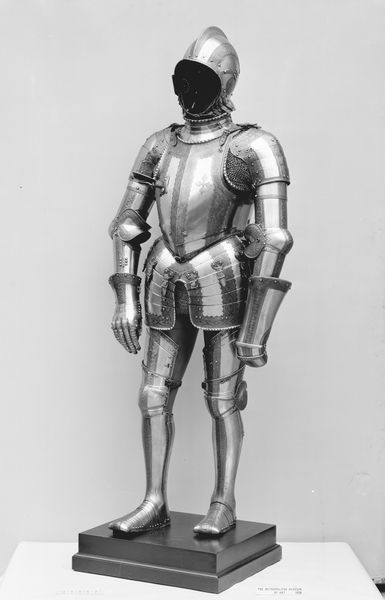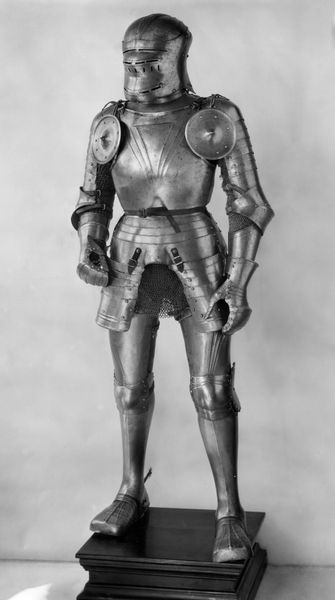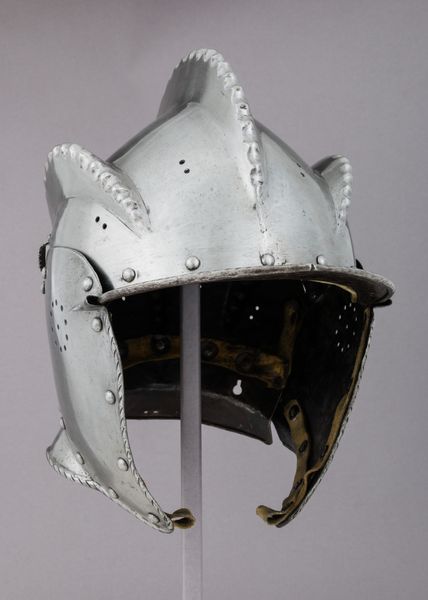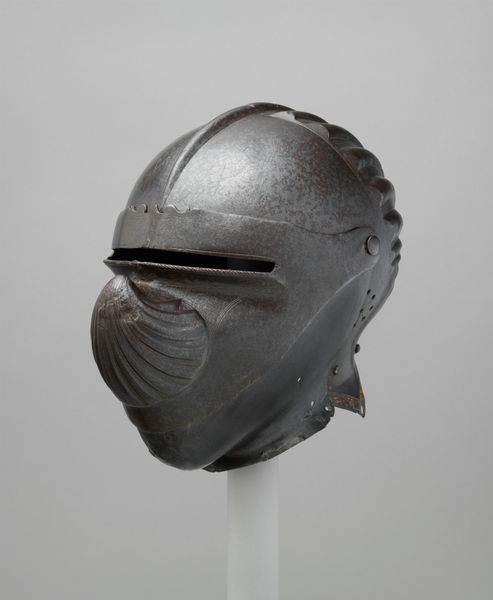
metal, sculpture
#
portrait
#
metal
#
sculpture
#
geometric
#
sculpture
#
armor
#
italian-renaissance
#
italy
#
statue
Dimensions: Wt. 25 lbs. 12 oz. (11.68 kg); Helmet (a) H. 12 in. (30.5 cm); W. 8 1/2 in. (21.6 cm); D. 11 1/2 in. (29.2 cm); Wt. 5 lbs. 1 oz. (2,296.31 g); Colletin (b) H. 7 in. (17.8 cm); W. 11 7/16 in. (29.1 cm); Wt. 2 lbs. 2 oz. (963.88 g); Breastplate (c) H. 18 1/8 in. (46.0 cm); W. 15 in. (38.1 cm); D. 7 7/8 in. (19.9 cm); Wt. 5 lbs. 4 oz (2,381.36 g); Backplate (d) H. 14 5/8 in. (37.2 cm); W. 14 5/8 in. (37.2 cm); Wt. 3 lbs. 3 oz. (1,445.83 g); Pauldron right (e) H. 10 1/2 in. (26.7 cm); W. 11 5/8 in. (29.5 cm); Wt. 2 lbs. 9 oz. (1,162.33 g); Pauldron left (f) H. 10 3/8 in. (26.4 cm); W. 11 in. (27.9 cm); Wt. 2 lbs. 12 oz. (1,247.38 g); Arm Defense right (g) L. 18 1/2 in. (46.9 cm); Wt. 2 lbs. 7 oz. (1,105.63 g); Arm Defense left (h) L. 18 1/4 in. (46.4 cm); Wt. 2 lbs. 6 oz. (1,077.28 g)
Copyright: Public Domain
Editor: This is the “Armor of the Dukes of Alba,” made sometime between 1550 and 1610. It’s currently held at the Metropolitan Museum of Art, and the material is listed as metal. The surface is extraordinarily intricate, almost decorative, which tempers the sense of power you might expect from a suit of armor. What strikes you about the piece? Curator: The all-over patterning is key. Note how the craftsman rejected large, plain surfaces. Every plane is articulated with either figural or foliate designs. The use of the etching technique transforms the steel from something brutally functional into a field of almost textile-like complexity. Consider the distribution of light: the raised elements catch the light, producing a play of shadows that emphasizes the three-dimensionality of the forms. Do you see any geometric components in the relief patterns? Editor: Yes, I see lots of circles and scrolling, geometric shapes, along with what look like human figures. Would the intended wearer have appreciated all these minute details? Curator: The question of appreciation is interesting. While we can never truly know the original audience's reception, it's plausible they would have delighted in the artistry. This object transcends mere protection; it functions as a statement of power and refined taste. Notice the delicate articulation of the joints, demonstrating superb control over the material properties. Editor: That's fascinating, to see this fusion of functionality and aesthetic embellishment. I hadn't really considered how the etching contributes to the overall texture. Curator: Precisely. It's the artist's manipulation of surface and form that elevates this object beyond its utilitarian purpose. The object becomes a study in controlled visual intricacy. Editor: Thank you; that really changed how I looked at this artwork! Curator: My pleasure; viewing it in terms of materiality, technique, and the manipulation of light and shadow really enriches our viewing experience.
Comments
No comments
Be the first to comment and join the conversation on the ultimate creative platform.
